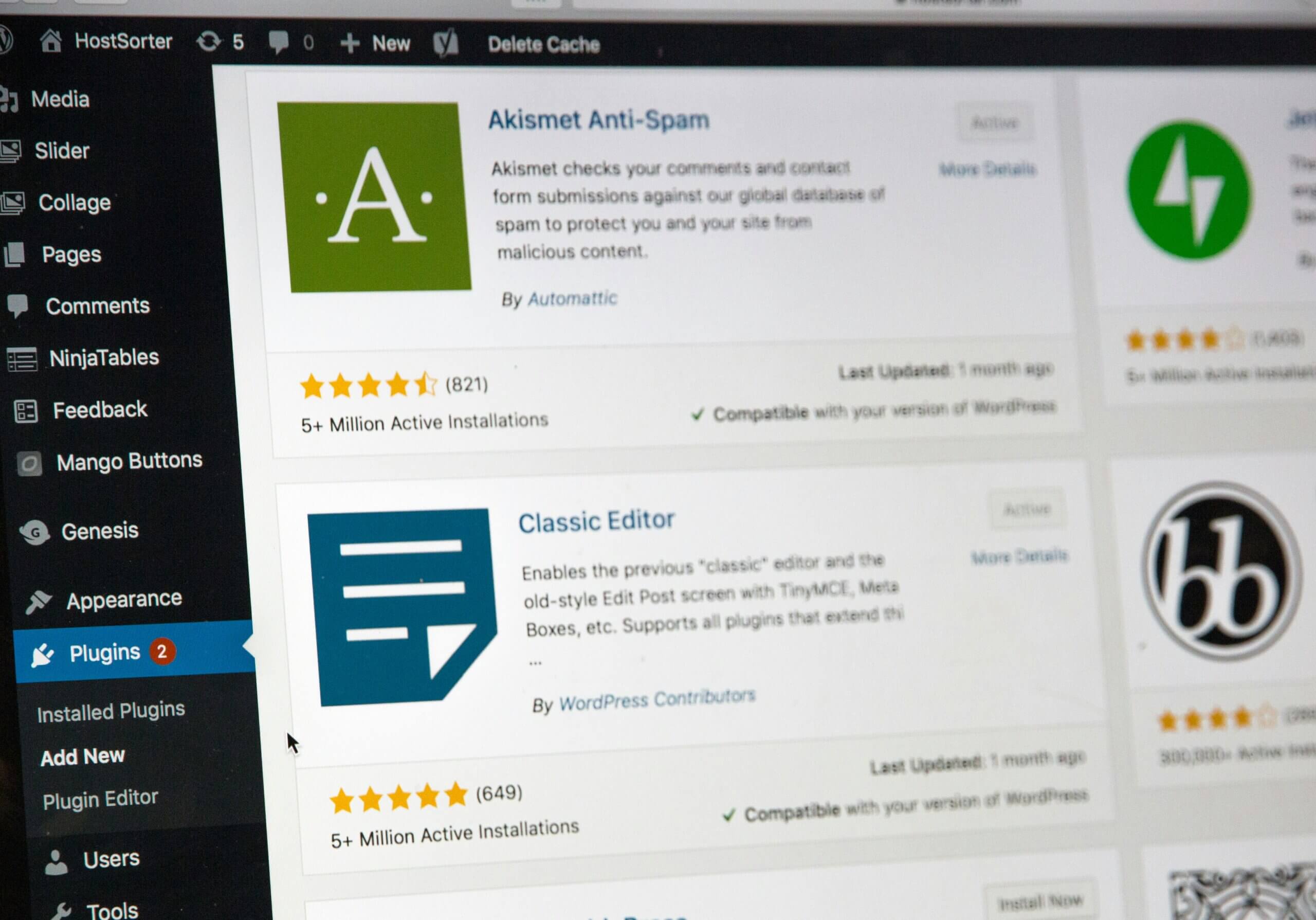Picture this: You’re sipping your morning coffee, scrolling through your phone, when suddenly you see it – a notification that your website just generated another lead while you slept. Sounds like a dream? It’s not. Just ask Vanessa Lau, who went from barista to millionaire in under two years by leveraging the power of strategic online presence.
But here’s the thing – creating a successful personal brand website isn’t just about throwing some fancy graphics together and hoping for the best. It’s about strategy, understanding your audience, and leveraging the right tools to create a site that’s not only visually appealing but also optimized for search engines and designed to convert visitors into customers.
As a website designer, I’ve made it my mission to master the art of creating websites that not only look great but also work hard for entrepreneurs and business owners. If you’re looking to build your personal brand and launch a website that automates your sales and prospecting process while delivering on SEO-friendly foundations and user-friendly design, you’re in the right place.
In this guide, we’ll dive deep into the world of personal branding through web design, exploring how to create a website that serves as the cornerstone of your online presence. We’ll cover a lot, from user-friendly design principles to showing you how to integrate automated sales processes that work tirelessly on your behalf.
Ready to transform your expertise into a thriving online brand with a website that sells and ranks? Let’s get started!

Why Create an Online Course?
You might be wondering, “Is creating an online course really worth it?” Well, let me ask you this: Would you like to:
- Generate income while you sleep?
- Establish yourself as a thought leader in your field?
- Reach a global audience with your expertise?
- Create a better work-life balance?
If you answered yes to any of these, then creating an online course could be your ticket to achieving these goals.
But don’t just take my word for it. According to recent statistics, the global e-learning market is projected to reach $325 billion by 2025. That’s a lot of pie to potentially get a slice of!
How Can I Create a Scalable Income Stream with Online Courses?
This is one of the most common questions I get, and it’s a great one. The beauty of online courses is their scalability. Once you’ve created your course, you can sell it to an unlimited number of students / members without significantly increasing your workload.
Here’s how it works:
- Create your course once
- Set up automated systems for sales and delivery
- Market your course to reach a wider audience
- Earn income each time someone purchases, even while you sleep!
As Alex Hormozi, a successful entrepreneur and course creator from Acquisition.com, puts it:
“I wanted to put out this free course just to help people make money without spending thousands on courses and mentorships.”
While Hormozi has moved away from selling high-priced courses, his statement highlights the potential of online courses to generate income and provide value at scale.
The Step-by-Step Guide to Creating Your Online Course
1. Define Your Niche and Target Audience
Before you even think about creating content, you need to know who you’re creating it for. Ask yourself:
- What unique expertise do I have?
- Who would benefit most from this knowledge?
- What problems can I solve for my audience?
Remember, the RICHES are in the NICHES! The more specific you can be, the better.
2. Structure Your Course Content
Now, here’s where many course creators stumble. They have all this knowledge, but how do they organize it into a coherent course?
Here’s a pro tip: Start with the end in mind. What do you want your students to be able to do by the end of your course? Then, work backwards to create a logical progression of lessons that will get them there.
3. Choose Your Course Platform
When it comes to hosting your online course, you have two main options: using a third-party marketplace or building your own website. While marketplaces like Udemy might seem tempting due to their existing audience, building your own website is almost always the better choice for serious course creators.
Here’s why:
- Complete Control: With your own website, you have full control over your branding, pricing, and content. You’re not subject to the whims of a third-party platform that could change its rules or algorithms at any time.
- Higher Profit Margins: Third-party platforms often take a significant cut of your sales. By hosting your course on your own site, you keep more of what you earn.
- Build Your Own Asset: When you drive traffic to your own website, you’re building a valuable business asset. You own your audience and can market to them directly.
- Flexibility: Your own website allows you to offer various products and services beyond just courses, such as coaching or consulting.
- Data Ownership: You have access to all your customer data, allowing for better marketing and customer relationships.
For these reasons, we strongly recommend building your own website using a self-hosted platform. Here are some top contenders:
These platforms allow you to create your own branded website while providing the necessary tools for course creation and sales. They offer the best of both worlds: the ease of use of a marketplace with the control and ownership of your own site.
Remember, while it might take more effort initially to set up your own site, the long-term benefits far outweigh the short-term convenience of a marketplace. You’re not just creating a course; you’re building a sustainable, scalable business.

4. Create Engaging Content
This is where the rubber meets the road. Your content needs to be not just informative, but engaging. Use a mix of video lectures, quizzes, worksheets, and interactive elements to keep your students engaged.
And here’s a game-changer: leverage AI tools to help with content creation and translation. As I discovered while working on my AI course for small businesses, AI can help bridge the gap between powerful tools and people’s ability to use them.
5. Set Up Your Sales Funnel
Your course is ready, but how do you get people to buy it? This is where your sales funnel comes in. Here’s a basic structure:
- Lead magnet (free valuable content)
- Email nurture sequence
- Website & Sales page
- Checkout process
- Thank you page / course access
Remember, automation is your friend here. Use tools like Calendly and Stripe to automate scheduling and payments, freeing up your time for high-value activities.
What’s the Best Way to Structure Online Course Content for Maximum Engagement?
Great question! The key is to break your content into digestible chunks. Here’s a structure that works well:
- Introduction module
- Core content modules (3-5 is usually ideal)
- Conclusion module
- Bonus content
Within each module, aim for lessons that are 5-10 minutes long. This keeps things bite-sized and easy to consume.
How Can I Automate My Online Course Business to Improve Work-Life Balance?
Automation is the secret sauce to creating a course business that doesn’t run your life. Here are some key areas to automate:
- Student onboarding
- Content delivery
- Payment processing
- Email marketing
By setting up these systems, you can create a business that runs smoothly even when you’re not actively working on it.
What Are Effective Strategies for Managing Time Between Client Work and Course Creation?
This is a challenge many course creators face. Here are some strategies that have worked for me and my clients:
- Block out specific times for course creation
- Use the Pomodoro technique for focused work sessions
- Outsource tasks that don’t require your expertise
- Use project management tools to stay organized
Remember, creating a course is an investment in your future. It may require some extra effort upfront, but the long-term payoff can be substantial.
Launching Your Course
You’ve put in the hard work, and now it’s time to launch. Here’s a quick launch checklist:
- Beta test with a small group
- Gather testimonials
- Create a buzz on social media
- Email your list
- Consider a limited-time launch offer
And don’t forget to celebrate your achievement!
The Power of Continuous Improvement
Here’s something many course creators miss: your first launch is just the beginning. The most successful courses are those that are continuously updated and improved based on student feedback.
As Vanessa Lau says,
“We all have a gift that someone else needs. Your knowledge and expertise can help people get from where they are now to where they want to be in their future quicker.”
By continually refining your course, you ensure that your gift keeps giving.
Ready to Create Your Online Course?
An online course allows you to share your expertise with a global audience, create a scalable income stream, and establish yourself as a thought leader in your field.
Remember, the journey of a thousand miles begins with a single step. So why not take that step today? Start by defining your niche and outlining your course content. Before you know it, you could be well on your way to creating a successful online course business.
And if you need help along the way, we’re here for you. At J Williams Designs, we specialize in helping coaches and consultants create impactful online courses. Why not book a free consultation with us to discuss your course idea? We’d love to help you bring your expertise to the world.
Are you ready to transform your knowledge into a thriving online course? The world is waiting for what you have to teach. Let’s make it happen!




